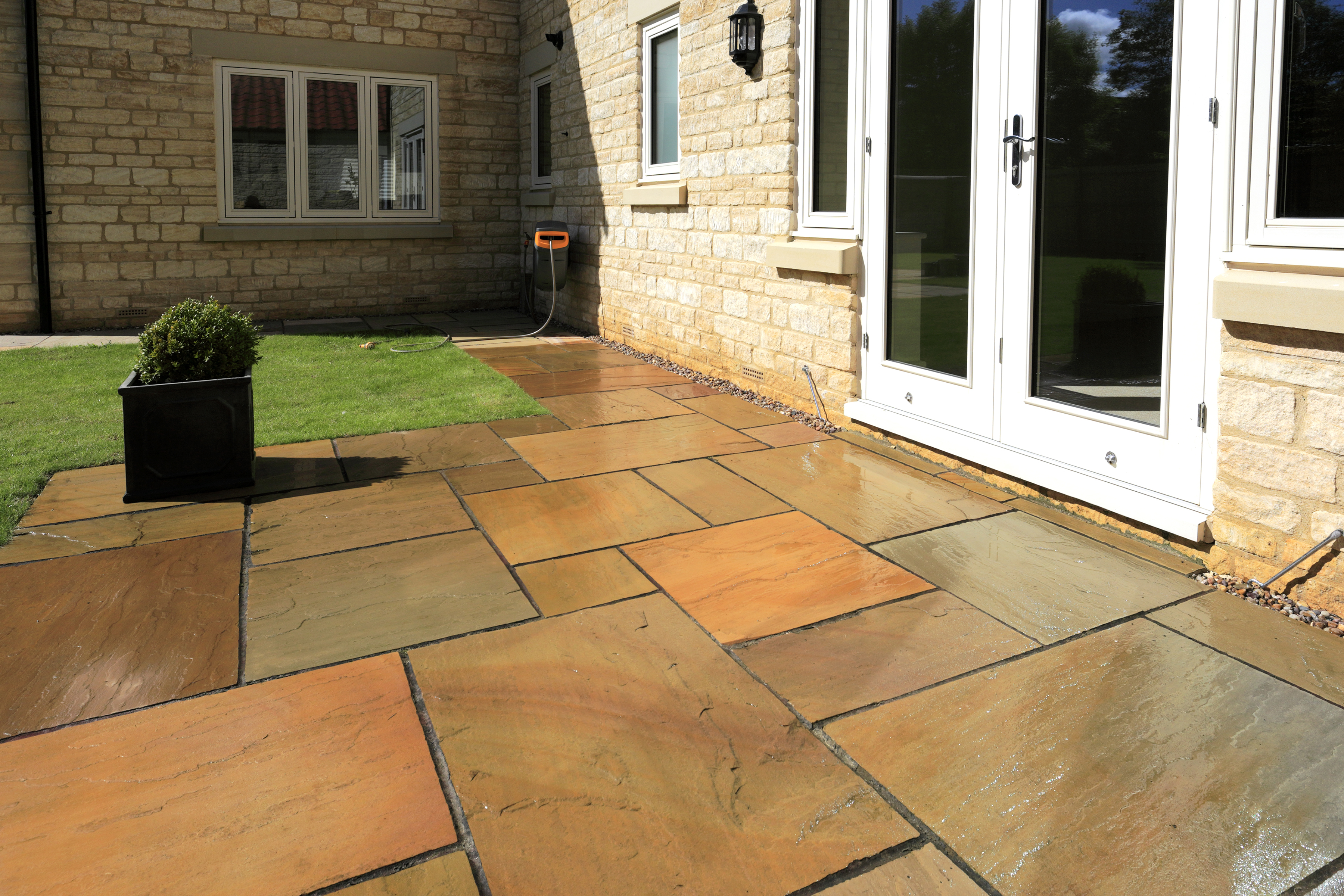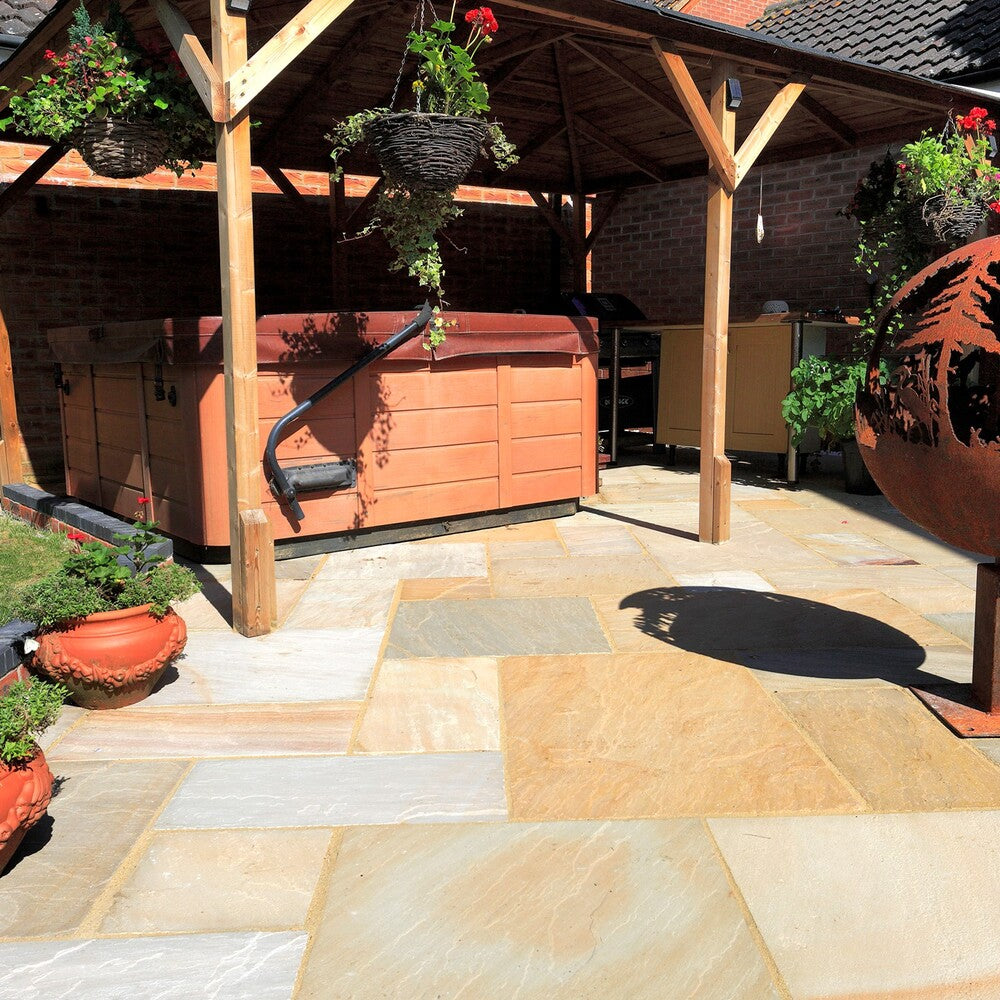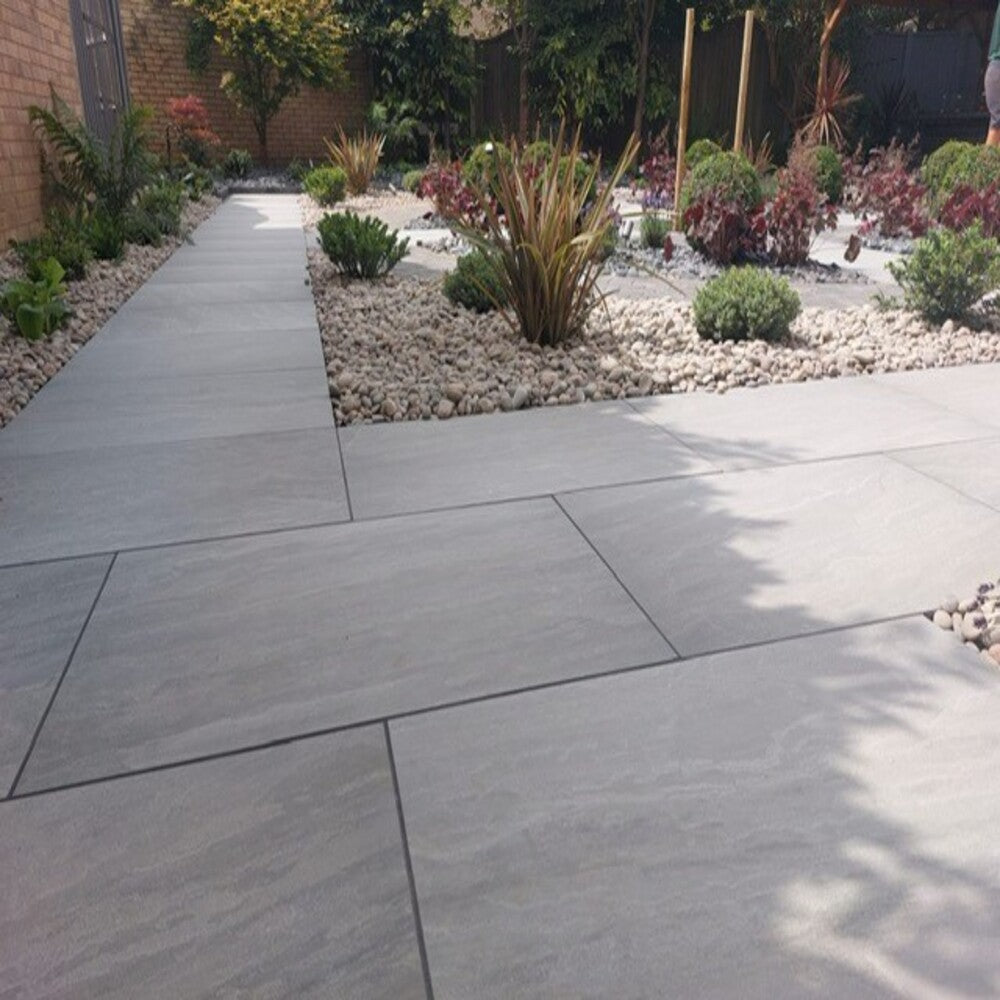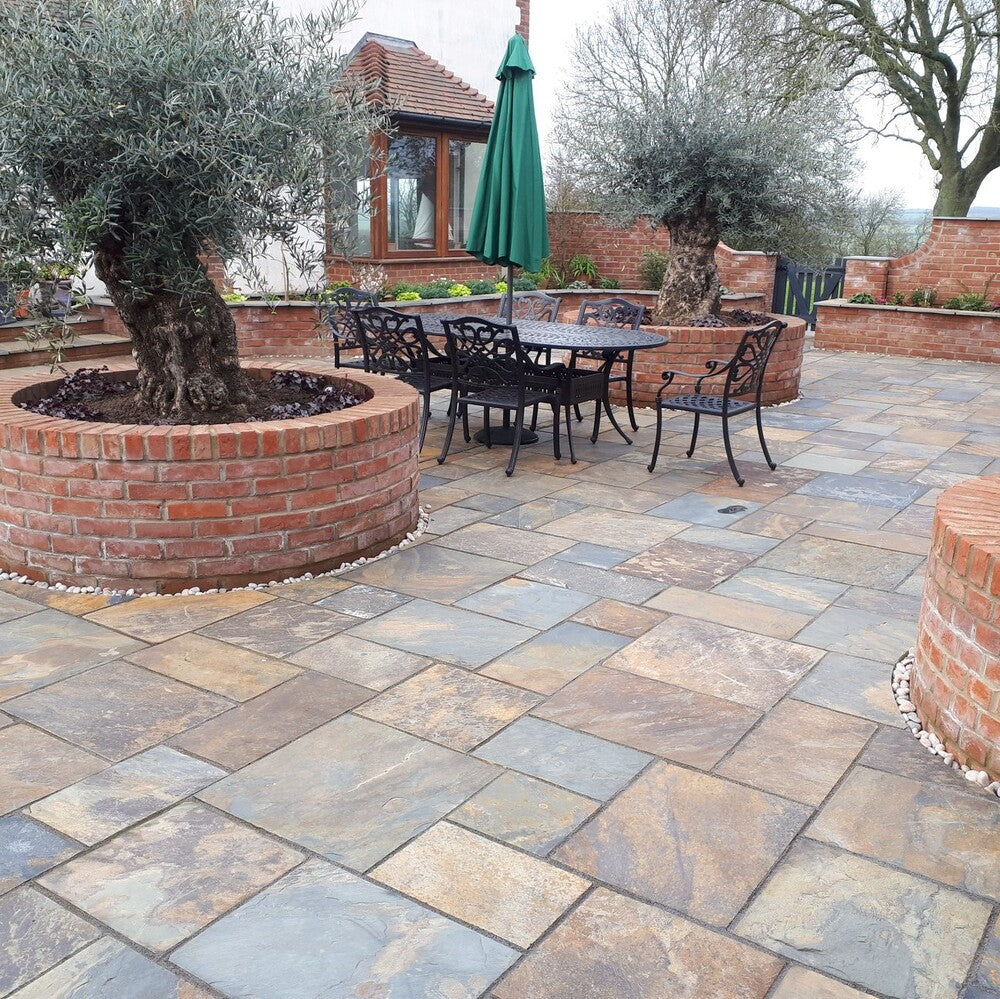Rainbow Indian sandstone paving is a top of the range diamond sawn Indian sandstone paving solution. It is calibrated and honed to leave a rich, vibrant and beautifully coloured appearance. There is often some surface quartzite in rainbow Indian sandstone that gives your paving a natural sparkle in the sunshine. It was popular for years and years. We would estimate that it was like close to 1 in 5 or even 2 in 5 people that viewed our display area would ultimately opt for Rainbow sandstone, such was it's popularity.
Why Is Rainbow Sandstone Paving Popular?
This premium grade paving brings a warmth and charm of natural quality stone to your garden. It is very eye-catching, with each paving stone offering intense swirls and patterns of colour. The Rainbow Indian sandstone is the most unique sandstone of all in our paving range. It has intense shades of oranges and purples swirled throughout. These colours are bound to brighten up any patio, while adding natural beauty to your garden. On the surface, it was really easy to see why it was so popular.
.jpg)
So Why Is Rainbow Sandstone Discontinued?
In recent years the quality of the stone has changed. Specific problems regularly started to pop up that we simply couldn't ignore. It was always a sandstone that was on the softer side when compared to other sandstones. The soft nature allowed for it to be cut very smooth, but in recent years - specifically starting towards the end of 2018 - the stone become softer and softer and the quality seemingly dropped off a cliff at the end of 2019. The slabs could be broken by hand in some instances.
Rainbow Sandstone Become Soft And Brittle
Silicon makes up the bulk of a rainbow slab and is a very tough material. This silicon bulk is the reason that sandstone can be a very strong material: The silicon grains are tightly packed together which causes the formation of the stone and the tighter the molecules are packed together, the harder the material. The deeper suppliers quarried into the rainbow sandstone deposits, the looser the stone got. It became so loosely packed that it became almost unusable as a construction material. Rainbow sandstone is a colourful sandstone paving option with clearly visible, colourful layers. The layers are a result of a looser structure - the molecules haven't been as tightly packed together so have formed in layers rather than a solid colour blend. The loosely packed molecules in rainbow Indian sandstone make it a much softer material to work with.
The softness of the rainbow Indian sandstone often means that this paving can be damaged in transit, but also during installation. When ordering rainbow Indian sandstone for your outdoor area, historically, we would always recommend you ordered at least 10% more than required, but towards the end of the rainbow sandstone era, it was closer to 25%+ that was beginning to arrive damaged in transit. It was like shipping something made from glass! Therefore we made the difficult decision to stop supplying this as an option.
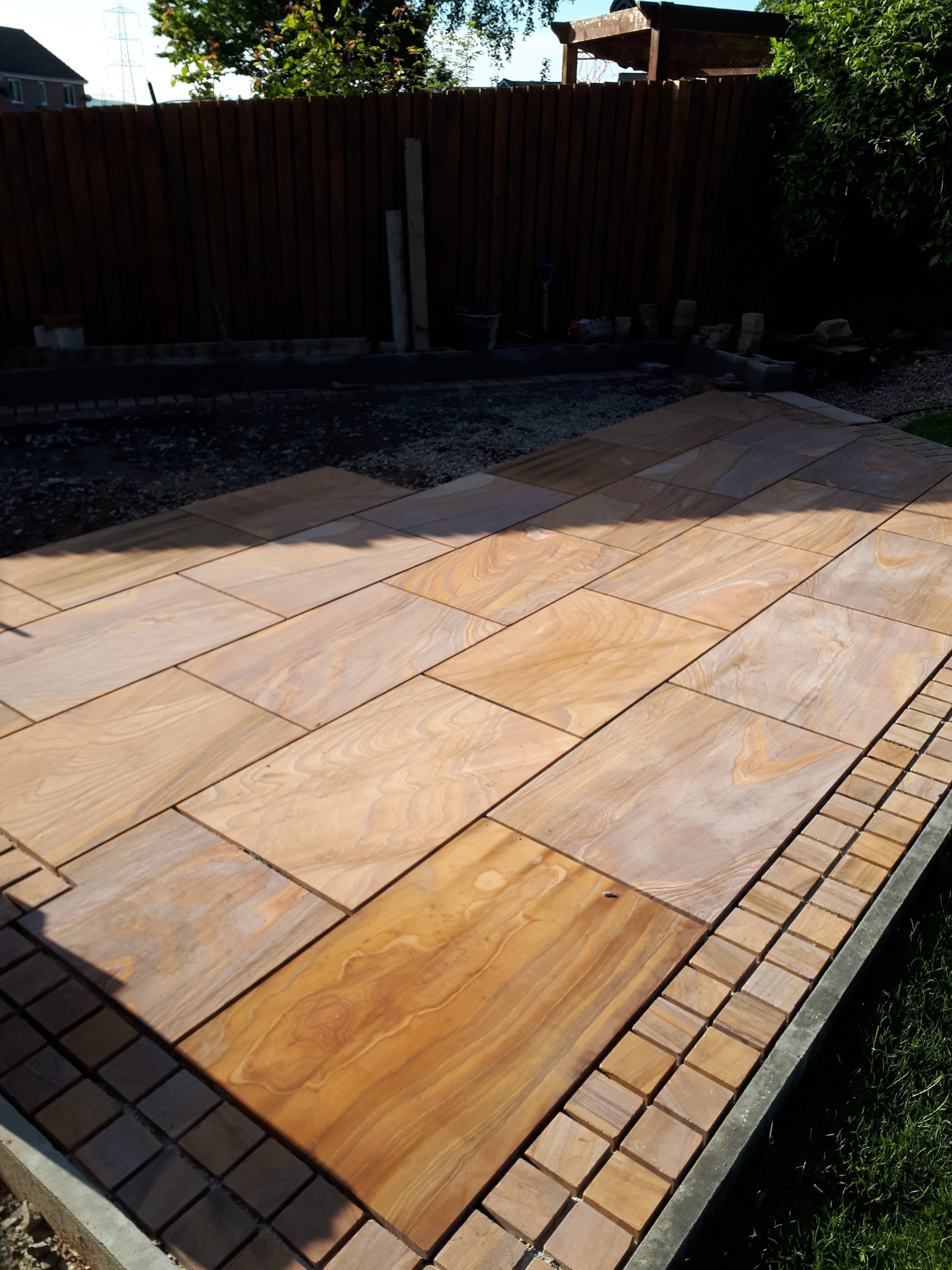
Rainbow Sandstone Became Less Vibrant
One of the redeeming features of rainbow sandstone that tempted some people to take a chance on a softer stone was the vibrancy and colour of the tile. However, in recent years the bright oranges and purples of this stone are no longer as vibrant and eye-catching as they used to be. Instead, the colours are much more muted.
Any sandstone is liable to fade over the years after installation when it is open to the elements of the typical British weather, but the softer the stone the more it will fade, which leads to a further problem with Rainbow sandstone. The very soft nature of the stone only speeds up the process, meaning that fading happens earlier and more quickly compared to a tougher stone.
Simply put, the sandstone was arriving more muted and dull than it had been previously, and fading to dull grey-ish tones even quicker than before. The risk-reward of a rainbow patio was now so unbalanced that it was almost unpurchaseable.
So What Are Some Alternatives To Indian Sandstone?
There are lots of other sandstones that do not suffer from these same problems, but still offer a colourful option. Take Rippon Buff sandstone for an example: it is a very tough paving solution as the molecules in it are tightly packed together, but remains very colourful and decorative.
There is nothing quite like rainbow - it's a unique stone that is tough to replicate with any other natural stone. But Rippon buff is the most colourful stone that will stand the test of time. The blend of oranges, reds and yellows add a splash of colour as well as durability.
The End Of Rainbow Sandstone
Rainbow Indian sandstone appears to have gone the way of Modak or polished sandstone and become almost a thing of the past. We will see if the quality picks up, but for now it certainly seems to be disappearing slowly.
You may find some suppliers still offer Rainbow sandstone, but our advice would be to avoid it. It is a higher-priced paving slab but hasn't delivered on quality for around 2 years.
If you have any queries; please do not hesitate to contact our team as always!

